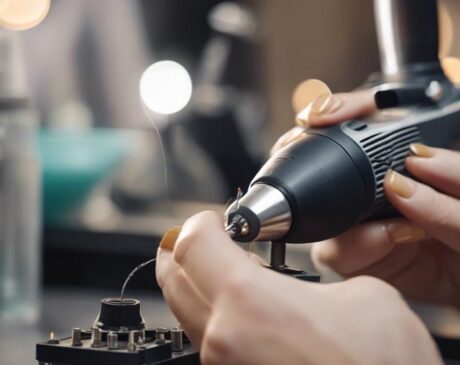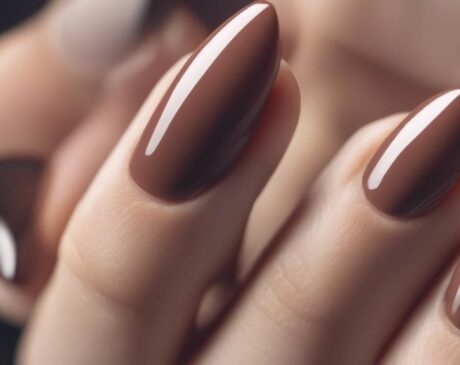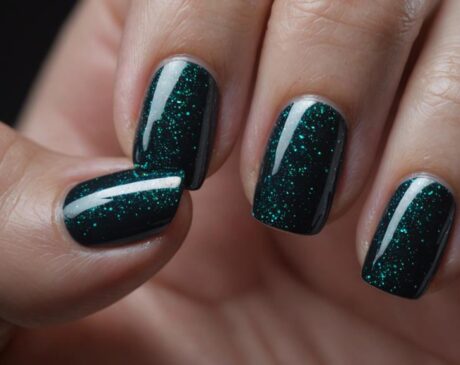Will vinegar remove press on nails?

Safe removal of press-on nails is essential to maintaining the health and integrity of your natural nails. Improper removal techniques can lead to damage such as thinning, brittleness, and even breakage of the nail. It is important to use a method that gently dissolves the adhesive and not forcefully pry the nail open, as this can strip away layers of natural nail and cause long-term damage.
Understanding Press-On Nails
Composition and Types
Press-on nails are artificial nail extensions made from various materials such as acrylic, gel, or plastic. They come in different shapes, sizes, and designs that cater to different aesthetic preferences. Their types range from simple, natural nails to elaborate, decorative nails for special occasions.
Popularity and Convenience
The popularity of press-on manicures has soared due to their convenience and affordability. Unlike traditional manicures, they don’t require time-consuming salon visits. They are easy to apply, making them the go-to solution for those looking for a quick, glamorous nail makeover.
Typical Adhesives Used
Press-on nails are usually secured using adhesives such as double-sided tape and liquid glue. These adhesives vary in strength and duration, with some designed for short-term wear and others designed for longer periods of time.
Vinegar as a Nail Product Remover
Properties of Vinegar
Vinegar, especially white vinegar, is an acidic solution known for its mild solvent properties. It’s acidic enough to be gentle enough not to harm the skin but also effective enough to weaken certain adhesives.
How Vinegar Interacts with Nail Adhesives
Vinegar works by slowly breaking down the bond between pressed-in nails and natural nails. The acetic acid in the vinegar penetrates and softens the adhesive, making it easier to remove.
Vinegar vs. Commercial Removers
While commercial removers are specially formulated for nail products and may work faster, vinegar is a more natural, less irritating alternative. It’s especially beneficial for people with sensitive skin or allergies to chemicals commonly found in commercial removers.
A Step-by-Step Guide to Using Vinegar
Preparing Your Nails and Materials
Before using the vinegar, prepare your materials: white vinegar, a bowl, warm water, a washcloth, and an orange stick or cuticle pusher. Clean your nails and remove any oils or debris that may prevent the vinegar from penetrating the adhesive.
Soaking Process
Mix equal parts vinegar and warm water in a bowl. Soak nails in the solution for 10-15 minutes. If nails are still firmly attached, soak for an additional 5-10 minutes.
Aftercare After Removal
After removing the press-on, wash your hands to neutralize the acidity of the vinegar. Moisturize your nails and cuticles with a nourishing oil or cream to restore moisture. If any adhesive residue remains, gently wipe it off, taking care not to damage the nail surface.
Advantages and Disadvantages of Using Vinegar
Advantages
Vinegar, especially white vinegar, is a readily available and cost-effective solution for removing pressed nails. It is a natural and non-toxic alternative to chemical removers, making it an excellent choice for people with sensitive skin or those looking for a more environmentally friendly method. Vinegar is also gentle on nails and skin, reducing the risk of irritation and nail damage associated with rougher commercial products.
Possible Disadvantages
Despite its many benefits, vinegar is not without its drawbacks. Its effectiveness depends on the type and strength of the adhesive used. Compared to commercial removers, vinegar usually takes longer to dissolve nail adhesive and requires patience during the removal process. Additionally, the acidic nature of vinegar can sometimes dry out nails and cuticles, requiring thorough post-removal care.
Precautions to Consider
When using vinegar, it must be diluted with water to reduce its acidity. Users should avoid over-soaking as prolonged exposure can lead to dry nails and skin. It is also important to perform patch tests to check for any allergic reactions, especially for those with sensitive skin.
Expert Opinion
Dermatologist’s Opinion
Dermatologists usually consider vinegar to be a safe alternative to nail removal products, as long as it is used correctly. They emphasize the importance of moisturizing nails and cuticles afterward to counteract the effects of dryness.
Insights from Nail Technicians
Nail technicians often see vinegar as a viable option, especially for those looking for a natural approach. However, they recommend that it should be used for temporary pressing rather than more permanent nail enhancement, as it has a milder effect.
User Experience and Reviews
Most users reported positive experiences with vinegar, praising its natural properties and affordability. Some found the longer time required for removal to be only a minor inconvenience, while others appreciated the gentleness of the method.
Alternatives to Vinegar
Commercial Nail Removal Products
Commercial nail removers usually contain acetone or non-acetone formulas designed for fast and effective removal. They are more effective than vinegar and are suitable for stronger adhesives and longer-lasting nail applications.
Natural Alternatives
Other natural alternatives include essential oil blends such as lavender oil or tea tree oil mixed with carrier oil. They are gentler on skin and nails, but may not work as well on tough adhesives.
Efficacy Comparison
When comparing efficacy, commercial nail removers are usually superior to vinegar in terms of adhesive dissolution speed and strength. However, vinegar is still a good choice for those who prioritize natural ingredients and skin sensitivity.
Summary of Key Points
- Vinegar is a natural, affordable, and usually safe way to remove press studs.
- It is suitable for people with sensitive skin, although it may take longer to work than commercial removers.
- Vinegar is effective for most types of press-on nails, but not for nails with strong adhesives.
- Post-removal care is important to keep your nails healthy.
Final Advice
Vinegar is a viable option for those looking for a natural, skin-friendly method of removing pressed-on nails. However, it is important to set realistic expectations regarding the time required and effectiveness based on the type of adhesive used. Be sure to perform proper nail and skin care after removal.
Frequently Asked Questions
- Does vinegar damage natural nails when used to remove press-on nails?
- Vinegar is unlikely to damage natural nails when used in moderation and properly diluted.
- How long does vinegar usually take to remove press-on nails?
- It may take 15 to 30 minutes, depending on the strength of the bond.
- Is vinegar a better choice than commercial removers for sensitive skin?
- Yes, vinegar is usually milder and may be a better choice for people with sensitive skin.
- Can this method be used on all types of press-on nails?
- While vinegar works on most types of nails, it may not work on nails that are very strongly adhered.
- Are there any special follow-up care tips after removal with vinegar?
- Moisturizing your nails and cuticles after removal is essential to prevent dryness and keep your nails healthy.




